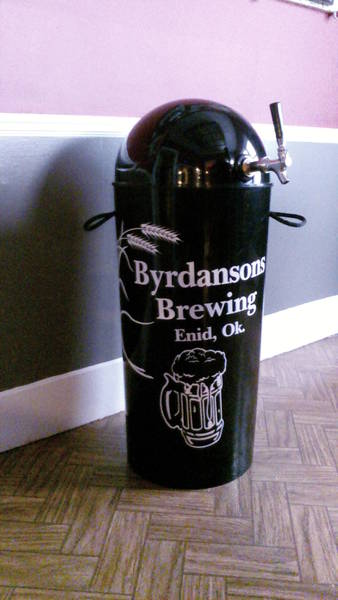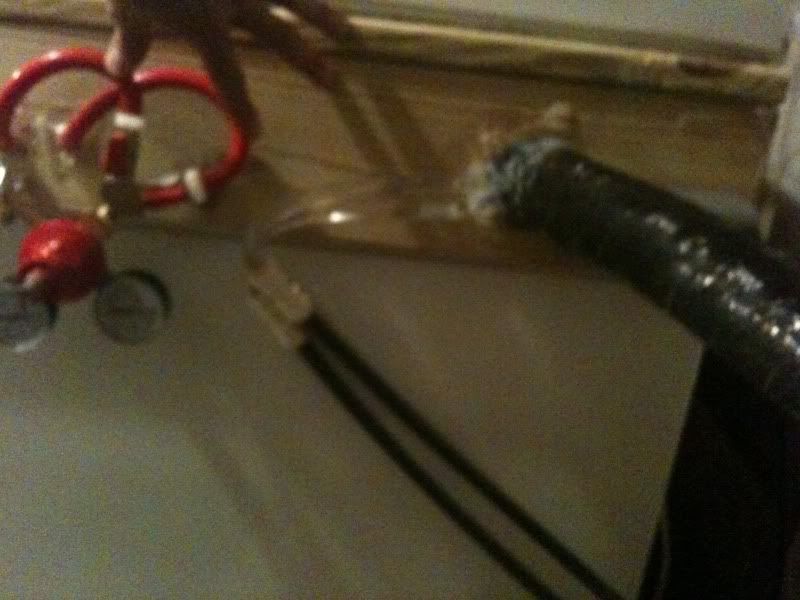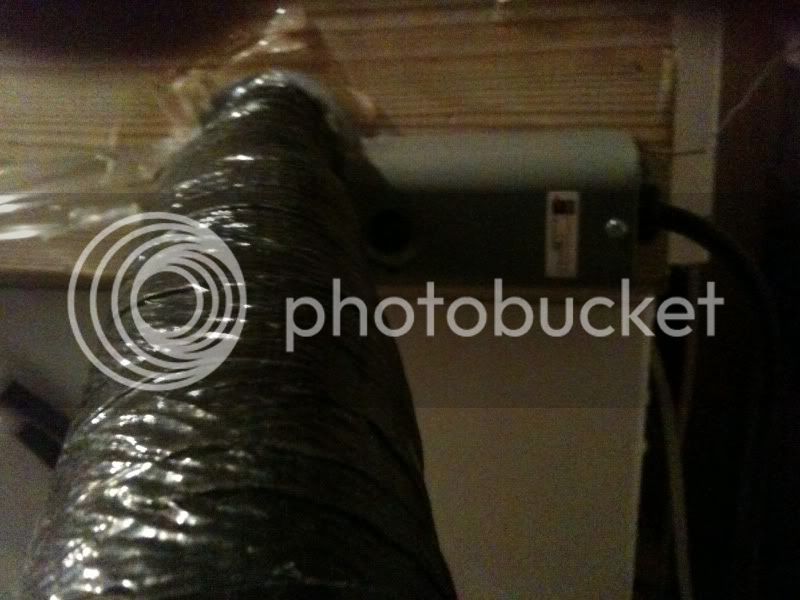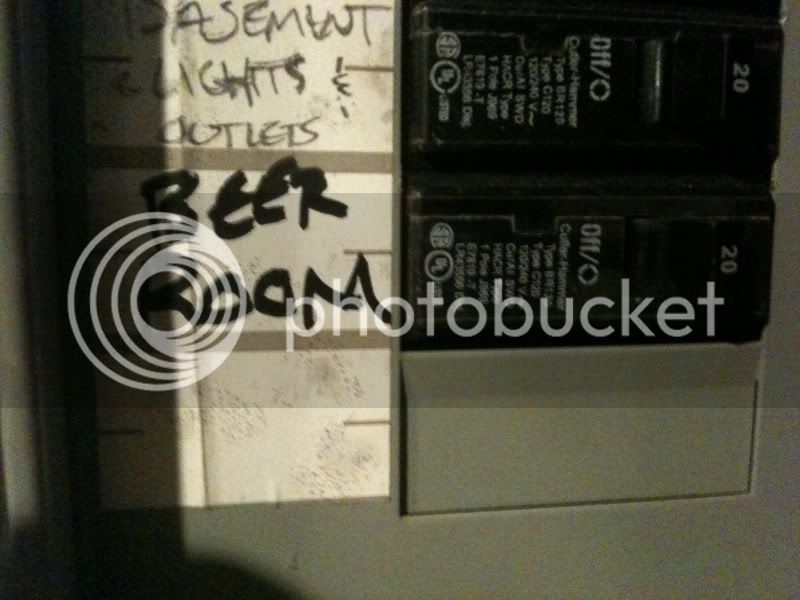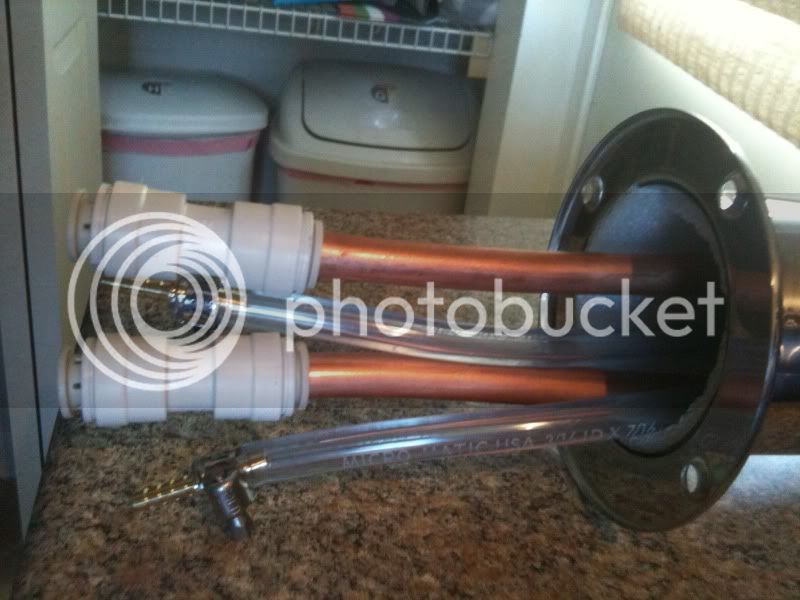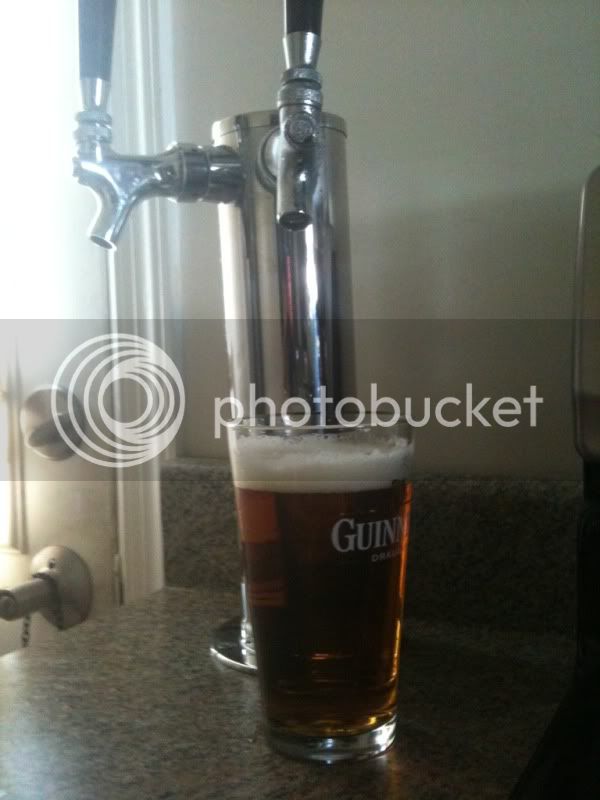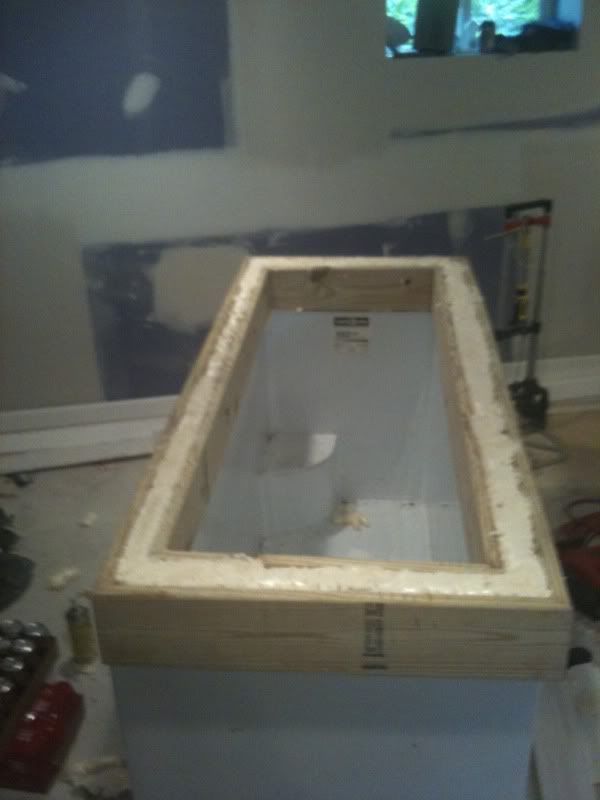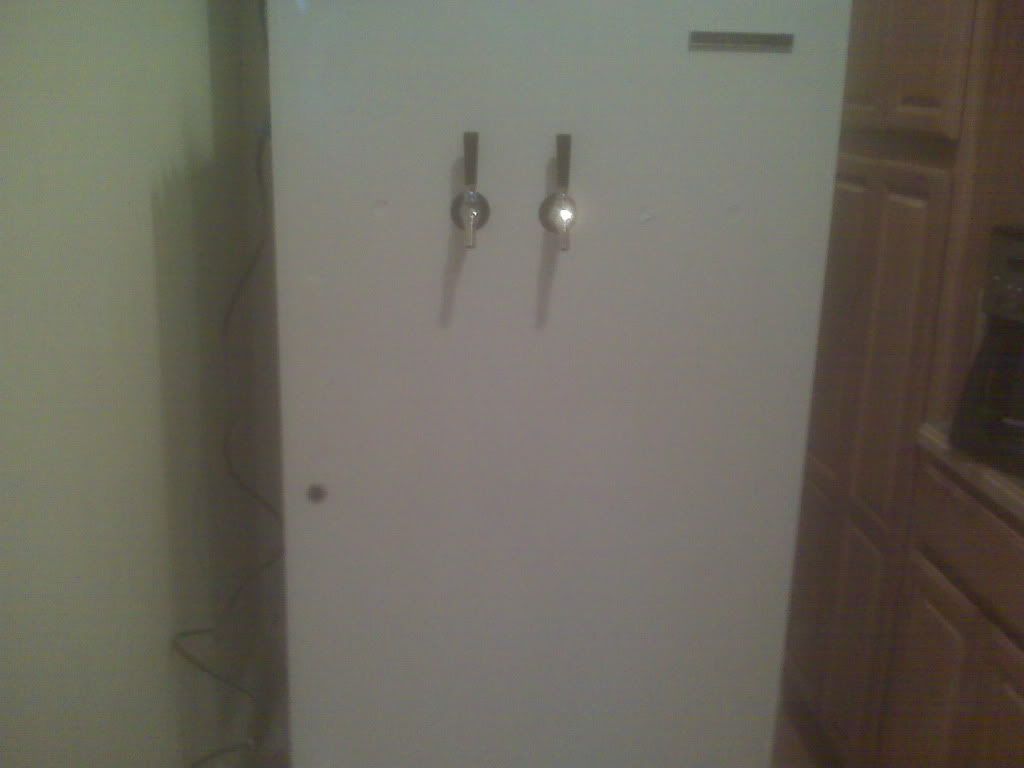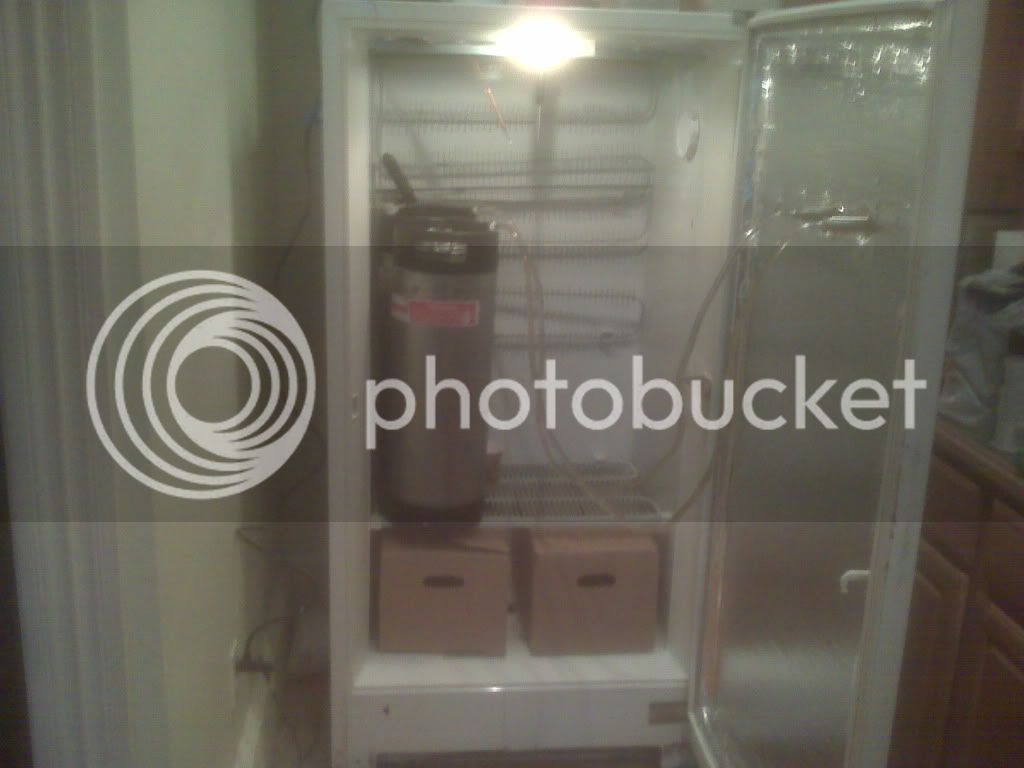I'd put some sort of cover the back wiring though. Keezers even mine with a fan and damprid in it are notorious for having condensation issues and that wont mix well with electricity.

I talked with Dwyer a bit about it, and the Love controllers are meant to work in a range of conditions. The guy basically said that a fridge setting shouldn't warrant any issues with condensation causing shorts/rust. I guess the controller circuit panel is coated. Personally, I can't see enough condensation forming to cause a short on the back exposed terminals.
That being said, I will probably coat each terminal with liquid electrical tape (since covering it with a box inside the freezer will be worse IMO since you probably wont get a perfect seal with various size wiring coming in/out of the controller).
Plus, since you have the collar attached to the body and not the lid, you could end up banging it with kegs.
Possible, but for me I doubt it. One of the benefits of loading trailers for UPS for a living. One 50lb keg is cake compared to 1600 boxes of 60lb anvil metal parts a night.

I've often wondered at what effect the wood collar has on the insulation of these things. I would imagine that heat would permeate through the wood a lot easier than through the insulation in the walls of the original freezer. For example, I would expect that looking through some thermal goggles at a running unit would show a major cold spot at the collar, as it would not be as insulated from the inside as the rest of the freezer. Is this addressed somehow in your guys' mods?
As everyone else said, easier, yes, but not a huge issue. Wood I believe has an R-value of 1 per inch. Foam has an r-value of 3, roughly. Even if the freezer is newer (say an inch of foam sandwiched between plastic and metal, that means a 2" pine collar (or other soft wood), still has 2/3rds the insulating capacity of the freezer itself. Add some thin foam and the difference will be negligable.
FWIW, my electric bill is normally around 58 dollars (gas heat, water, range, dryer, etc). After hooking up the kegerator (12v fan included), my bill was 62 bucks. That difference could be anything really. Pretty much no difference with a 9 +/- cu/ft freezer with a hardwood (which
lowers the R-value) collar and cheap (=crappy) foam insulation I had lying around.
There have been others that voiced similar concerns to yours, and if you peruse this site enough you will see some people have gone to the effort of adding insulation to their wood collars to rectify this problem.
It all depends on priorities. For some people it is not worth the effort/cost, and others it is.

http://www.bonemopbrewing.com -- been meaning to throw this up with the pics of my keezer for awhile now. The tap handles were hand made from stainless steel pipe and welding wire by my father. They're welded on the back, then ground down on the front to make them convex, then polished and shined.
So, ummmm.....he should start making and selling them on a larger scale. I'd buy 2 in a heartbeat.
Those are ridiculously cool. People that can make art from metal never cease to amaze me. I can make pretty much anything out of wood, and make it well; but could never do anything with metal that looked remotely close to good.
Shorter shanks. Mine protrude 1/2" beyond the insulation. However in this case it may be desirable to keep the taps cold to reduce foaming. I could go either way on this one, but the shorter shanks help getting kegs in and out with a collar-on-body keezer.
Not sure on that. I don't see the extra inch or 2 contributing a lot to thermal mass that makes a huge difference in foam issues or whatnot. Now, I do think thicker collars will make a difference. They may insulate better, but if you don't allow some "breathing" room with the shank/collar fit, then 2-3" of wood means 2-3" where the shank is at room temp, or at least noticeably warmer than the freezer itself.
Doing some tests, for me, the shortest shank possible as well as a 1" (not 7/8") gave me the lowest amount of foam. I think having that air gap, which basically surrounded the whole shank to the faucet with cold air, helped.
I ran 22psi in 8' lines for my hefe with a 3" shank and got maybe 40% foam on my first pour, and the perfect amount every glass after (so long as it was within a 30-40 min window from the previous pour).


























![Craft A Brew - Safale BE-256 Yeast - Fermentis - Belgian Ale Dry Yeast - For Belgian & Strong Ales - Ingredients for Home Brewing - Beer Making Supplies - [3 Pack]](https://m.media-amazon.com/images/I/51bcKEwQmWL._SL500_.jpg)

































